-
 bitcoin
bitcoin $112139.774561 USD
-1.82% -
 ethereum
ethereum $3970.329568 USD
-3.85% -
 tether
tether $1.000078 USD
0.01% -
 xrp
xrp $2.611653 USD
-1.08% -
 bnb
bnb $1099.982737 USD
-3.67% -
 solana
solana $193.702075 USD
-3.33% -
 usd-coin
usd-coin $0.999832 USD
0.00% -
 dogecoin
dogecoin $0.193302 USD
-3.68% -
 tron
tron $0.294800 USD
-1.45% -
 cardano
cardano $0.642524 USD
-3.89% -
 hyperliquid
hyperliquid $47.524848 USD
1.27% -
 chainlink
chainlink $17.842256 USD
-2.41% -
 bitcoin-cash
bitcoin-cash $561.265025 USD
1.01% -
 stellar
stellar $0.317292 USD
-2.07% -
 ethena-usde
ethena-usde $0.999303 USD
0.01%
The Best Exponential Moving Average (EMA) Settings for Crypto Swing Trading
The 9-day and 21-day EMA combo is ideal for crypto swing trading, offering timely trend signals while reducing lag in fast-moving markets.
Oct 25, 2025 at 04:55 pm
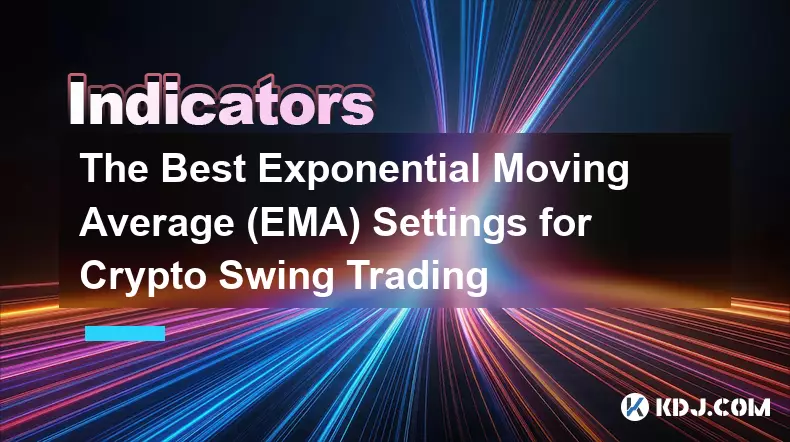
The Best Exponential Moving Average (EMA) Settings for Crypto Swing Trading
Swing trading in the cryptocurrency market relies heavily on identifying trends and momentum shifts. One of the most widely used tools for this purpose is the Exponential Moving Average (EMA). Unlike the Simple Moving Average (SMA), the EMA gives more weight to recent price data, making it more responsive to new information. This sensitivity makes it ideal for the fast-moving crypto markets.
Understanding the Role of EMA in Crypto Markets
1. The EMA helps traders spot trend reversals earlier than traditional moving averages.2. Because cryptocurrencies often experience sharp price swings, a lagging indicator like SMA may miss critical entry or exit points. The EMA reduces this lag by emphasizing current prices.
3. Traders use EMAs not only to determine trend direction but also as dynamic support and resistance levels during strong moves.
4. Multiple EMA lines can be layered on a chart to create a moving average ribbon, providing deeper insight into trend strength and potential crossovers.
5. In volatile conditions, shorter-term EMAs react quickly, while longer-term EMAs offer context about the broader trend.
Optimal EMA Combinations for Swing Trading Cryptos
1. The 9-day and 21-day EMA combination is favored by many swing traders for its balance between responsiveness and reliability.2. When the 9 EMA crosses above the 21 EMA, it signals a potential bullish swing; the opposite indicates bearish momentum.
3. Some traders add the 50-day EMA to filter out false signals—only taking trades when price is above the 50 EMA in uptrends, and below it in downtrends.
4. For more aggressive setups, the 8-day and 13-day EMAs are used on lower timeframes like 4-hour or 1-hour charts to catch early moves.
5. Institutional traders sometimes monitor the 200-day EMA as a long-term trend benchmark, even in swing strategies, to avoid counter-trend entries.
How to Apply EMA in Real-Time Crypto Trading
1. Combine EMA crossovers with volume analysis to confirm breakout validity.2. Use the EMA slope as a visual cue—steep upward slopes suggest strong bullish momentum, while flattening or downward slopes warn of weakening trends.
3. In ranging markets, EMAs may generate multiple false signals; pairing them with oscillators like RSI or Stochastic helps distinguish noise from real momentum.
4. Adjust EMA settings based on the asset’s volatility—Bitcoin might perform better with 21/50 settings, while altcoins like Solana or Dogecoin may need tighter parameters like 9/18 due to faster price action.
5. Always backtest EMA strategies on historical data across various coins to assess consistency before live deployment.
Frequently Asked Questions
What is the difference between EMA and SMA in crypto trading?
The main difference lies in how they calculate average prices. EMA assigns higher weight to recent prices, making it more sensitive to new data. SMA treats all periods equally, which can result in delayed signals. In fast-moving crypto markets, EMA is generally preferred for timely entries and exits.
Can EMA alone be used to make trading decisions?
No single indicator should be used in isolation. While EMA provides valuable trend insights, relying solely on it increases the risk of false signals. It works best when combined with volume, price action, or other technical indicators to improve accuracy.
Which timeframe is best for using EMA in swing trading?
The 4-hour and daily charts are most effective for crypto swing trading with EMA. These timeframes reduce market noise while still capturing meaningful price movements that last several days to weeks, aligning well with swing trading horizons.
Do EMA settings vary between different cryptocurrencies?
Yes, highly volatile altcoins often require shorter EMA periods to keep up with rapid price changes. Bitcoin, being relatively more stable, performs well with standard settings like 21 and 50. Traders should adjust EMA lengths based on each coin’s historical volatility and trading behavior.
Disclaimer:info@kdj.com
The information provided is not trading advice. kdj.com does not assume any responsibility for any investments made based on the information provided in this article. Cryptocurrencies are highly volatile and it is highly recommended that you invest with caution after thorough research!
If you believe that the content used on this website infringes your copyright, please contact us immediately (info@kdj.com) and we will delete it promptly.
- Essex Post Office, 5p Coins, and King Charles: A Royal Mint Revelation!
- 2025-10-23 10:30:16
- Waymo's Newark Airport AV Tests: Alphabet's AI Gamble Pays Off?
- 2025-10-23 10:30:16
- King Charles 5p Coins: A Royal Flush in Your Pocket?
- 2025-10-23 10:35:18
- Solana, Crypto Advisory, and Forward Industries: A New York Minute on the Future of Finance
- 2025-10-23 08:51:22
- MAGACOIN: Ethereum Whales Dive into the Hottest Presale of 2025
- 2025-10-23 08:51:22
- Kadena's End of the Road? KDA Token Plummets Amid Project Abandonment
- 2025-10-23 08:55:34
Related knowledge

The Best Exponential Moving Average (EMA) Settings for Crypto Swing Trading
Oct 25,2025 at 04:55pm
The Best Exponential Moving Average (EMA) Settings for Crypto Swing TradingSwing trading in the cryptocurrency market relies heavily on identifying tr...
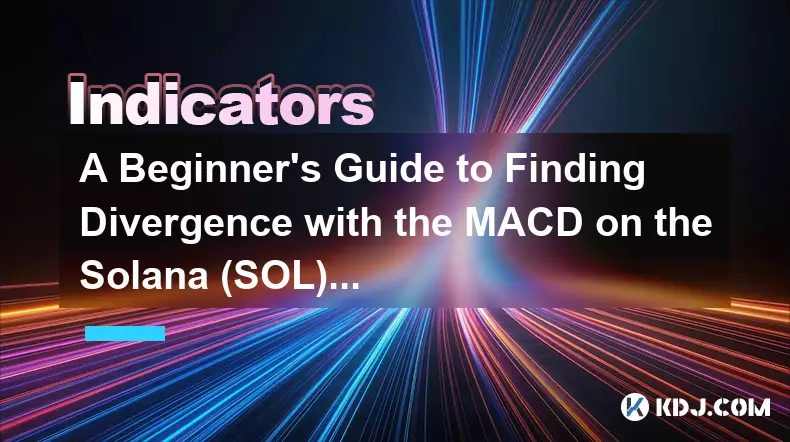
A Beginner's Guide to Finding Divergence with the MACD on the Solana (SOL) Chart
Oct 26,2025 at 12:36pm
Understanding MACD and Its Role in Solana Trading1. The Moving Average Convergence Divergence (MACD) is a momentum indicator widely used in cryptocurr...
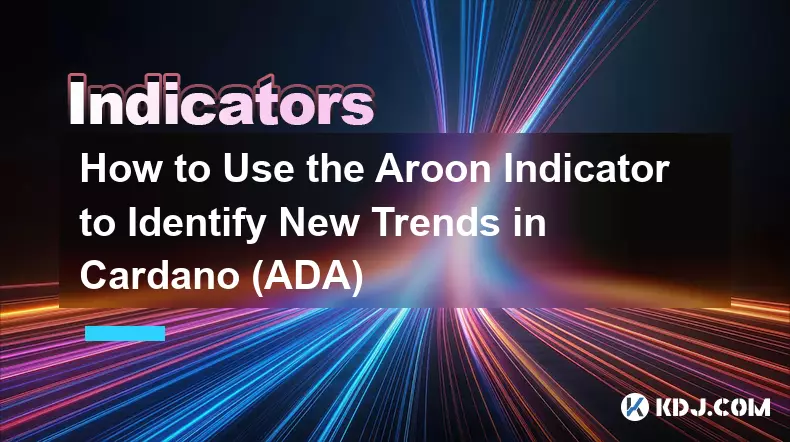
How to Use the Aroon Indicator to Identify New Trends in Cardano (ADA)
Oct 26,2025 at 10:18pm
Understanding the Aroon Indicator in Cryptocurrency Trading1. The Aroon indicator is a technical analysis tool designed to identify whether an asset i...
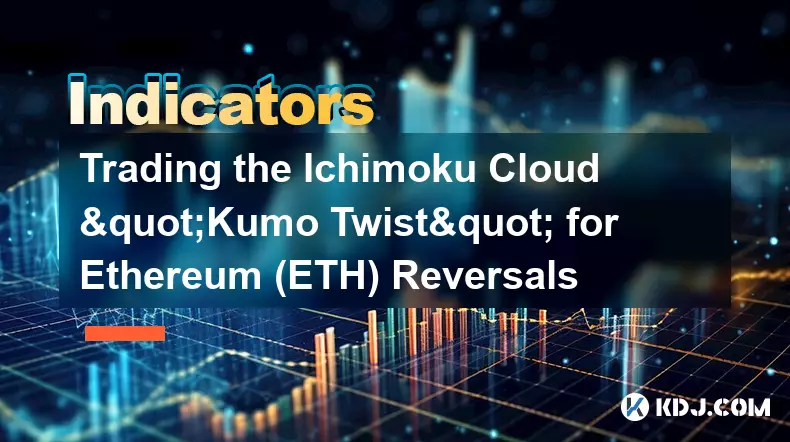
Trading the Ichimoku Cloud "Kumo Twist" for Ethereum (ETH) Reversals
Oct 27,2025 at 01:54am
Understanding the Ichimoku Cloud and Its Components1. The Ichimoku Cloud, also known as Ichimoku Kinko Hyo, is a comprehensive technical analysis tool...
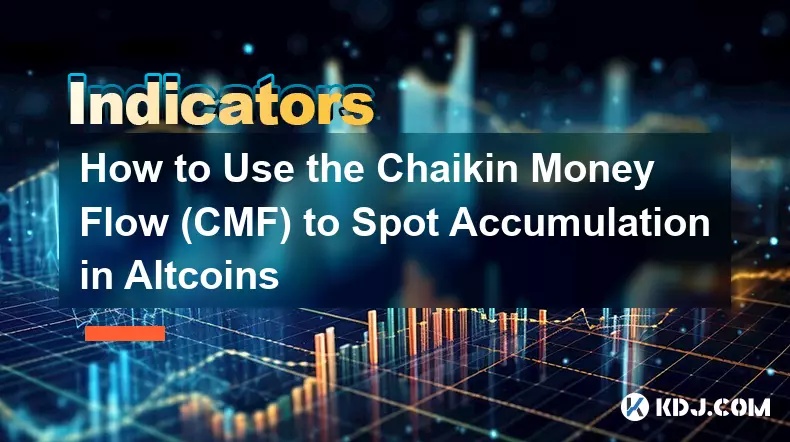
How to Use the Chaikin Money Flow (CMF) to Spot Accumulation in Altcoins
Oct 25,2025 at 08:18pm
Understanding Chaikin Money Flow in the Context of Altcoin Markets1. The Chaikin Money Flow (CMF) is a technical indicator developed by Marc Chaikin t...

How to Trade with the Keltner Channel Indicator on the Ethereum (ETH) Chart
Oct 28,2025 at 08:54am
Understanding the Keltner Channel in Ethereum Trading1. The Keltner Channel is a volatility-based technical indicator that consists of three lines: an...

The Best Exponential Moving Average (EMA) Settings for Crypto Swing Trading
Oct 25,2025 at 04:55pm
The Best Exponential Moving Average (EMA) Settings for Crypto Swing TradingSwing trading in the cryptocurrency market relies heavily on identifying tr...

A Beginner's Guide to Finding Divergence with the MACD on the Solana (SOL) Chart
Oct 26,2025 at 12:36pm
Understanding MACD and Its Role in Solana Trading1. The Moving Average Convergence Divergence (MACD) is a momentum indicator widely used in cryptocurr...

How to Use the Aroon Indicator to Identify New Trends in Cardano (ADA)
Oct 26,2025 at 10:18pm
Understanding the Aroon Indicator in Cryptocurrency Trading1. The Aroon indicator is a technical analysis tool designed to identify whether an asset i...

Trading the Ichimoku Cloud "Kumo Twist" for Ethereum (ETH) Reversals
Oct 27,2025 at 01:54am
Understanding the Ichimoku Cloud and Its Components1. The Ichimoku Cloud, also known as Ichimoku Kinko Hyo, is a comprehensive technical analysis tool...

How to Use the Chaikin Money Flow (CMF) to Spot Accumulation in Altcoins
Oct 25,2025 at 08:18pm
Understanding Chaikin Money Flow in the Context of Altcoin Markets1. The Chaikin Money Flow (CMF) is a technical indicator developed by Marc Chaikin t...

How to Trade with the Keltner Channel Indicator on the Ethereum (ETH) Chart
Oct 28,2025 at 08:54am
Understanding the Keltner Channel in Ethereum Trading1. The Keltner Channel is a volatility-based technical indicator that consists of three lines: an...
See all articles









































































